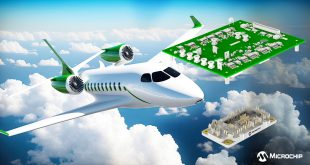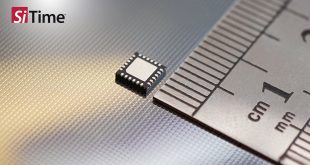Haptics as an industry has been resurgent over the last three years. After a long period of relative inactivity where haptics research was confined to a relatively tight group of companies and academics, the industry has been transformed in recent history by significant disruption of traditional markets by newer technology options. Many new players, from the largest OEMs to new emerging start-ups have ridden the wave of interest, funding and growth to develop new advanced haptics solutions. Today sees one of these emerging companies, Boréas Technologies, releasing their developer kits to the public for the first time. IDTechEx spoke to Boréas Technologies’ founder and CEO Simon Chaput about their product and their ambitions to disrupt the haptics market today.
 Boréas Technologies’ product concerns piezoelectric actuators. This technology has long been recognised as being a strong candidate for the creation of so-called “HD haptics” due to their fast response time, wide bandwidths, potential thin form factors and more. However, piezoelectric actuators typically require driving at high voltage, meaning issues with efficiency or distortion can lead to poor power consumption, noise and other challenges. These issues and others have meant that, despite their clear potential, piezoelectric actuators have failed to penetrate the larger main-stream markets in haptics. For more information about the difference in haptics technologies used today, see the IDTechEx report “Haptics 2018-2028: Technologies, Markets & Players“. The report contains full assessments of each of the major haptics technologies, including ERM motors, LRAs and other electromagnetic actuators, piezoelectric actuators, shape memory alloys, polymeric haptics, surface haptics and many more.
Boréas Technologies’ product concerns piezoelectric actuators. This technology has long been recognised as being a strong candidate for the creation of so-called “HD haptics” due to their fast response time, wide bandwidths, potential thin form factors and more. However, piezoelectric actuators typically require driving at high voltage, meaning issues with efficiency or distortion can lead to poor power consumption, noise and other challenges. These issues and others have meant that, despite their clear potential, piezoelectric actuators have failed to penetrate the larger main-stream markets in haptics. For more information about the difference in haptics technologies used today, see the IDTechEx report “Haptics 2018-2028: Technologies, Markets & Players“. The report contains full assessments of each of the major haptics technologies, including ERM motors, LRAs and other electromagnetic actuators, piezoelectric actuators, shape memory alloys, polymeric haptics, surface haptics and many more.
Boréas Technologies aim to help overcome the challenge with piezoelectric actuators. Their product, known as CapDrive (TM) was developed from the ground up to optimise power consumption, minimise noise and have a small form factor. The product was originally developed during Chaput’s PhD at Harvard, where the aim was to develop ultra-thin and efficient piezoelectric fans for cooling electronic devices. When commercialising the product, they recognised the potential for disruption in the haptics space, particularly due to the fact that there was only one main manufacturer of drivers suitable for piezoelectric actuators in the market previously. They gained initial validation from various partners and from today, developer kits from Boréas Technologies will be available for testing, allowing a wider community to join their alpha test group in experimenting with this new technology.
One particular highlight from IDTechEx’s discussion with Boréas Technologies was their target application around so-called “button haptics”. This is a popular topic in the industry ever since Apple, the major instigator, replaced their mechanical “home” buttons with solid-state, force sensor-based version backed with their Taptic Engine (LRA haptics). The solid-state button is more reliable, as well as offering some other minor advantages such as the ability to calibrate the force input. The solid-state button works well alongside the Taptic Engine, which is positioned close enough to give realistic, local clicks to indicate levels of activation under pressure from the user.
However, with other mechanical buttons throughout the device (volume, power, silent mode, etc.), the logical next step could be to replace these too. However, the central haptic feedback (whether Apple’s custom LRA or otherwise) cannot be local to all of these, so the sensation that was so well replaced in the home button cannot be replicated for these other buttons. Therefore, if the desire is also to make these buttons solid-state then an alternative solution for their haptics is required.
Boréas Technologies’ solution based on piezoelectric ceramic units is certainly not the only solution to emerge. Cambridge Mechatronics have taken their historic experience deploying shape memory alloys (in everything from kettle timers to high-speed rail transmission) and found answers to this problem using carefully controlled, miniature nitinol wires. Novasentis have developed and commercialised layered electroactive polymer films that can be integrated onto the surface of devices to provide completely localised haptic feedback. In other approaches, companies such as Nanoport R&D (part of Nanomagnetics) have developed new versions of electromagnetic actuators, offering similar structure and size to the LRAs of today, but with the ability to generate more custom and varied sensations.
Full company profiles based on interviews and demonstrations with each of these companies are available with IDTechEx’s market research report “Haptics 2018-2028: Technologies, Markets & Players“. In total, 66 companies are mentioned in the report, with full profiles based on interviews with more than 25 different companies. The report offers the most comprehensive overview of the haptics market today, describing the current industry dynamic and the future opportunities in the pipeline from each of the players in this space, with both quantitative and qualitative data provided across each of the technologies, markets and players described.
 CIE Components in Electronics
CIE Components in Electronics



